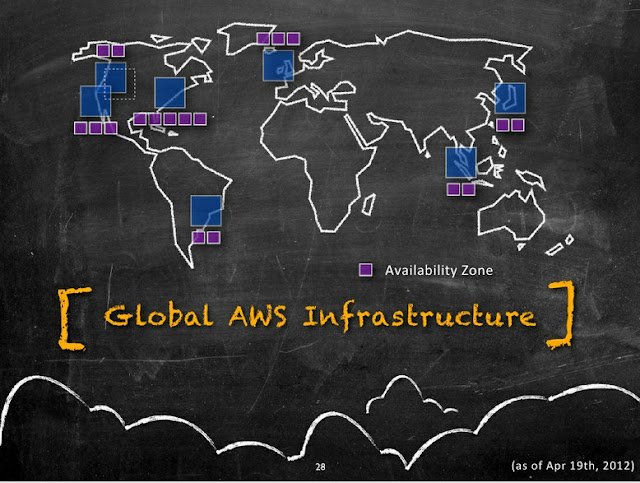Architecting High Availability across AZ’s
Amazon Availability Zones are distinct physical locations having Low latency network connectivity between them inside the same region and are engineered to be insulated from failures from other AZ’s. They have Independent power, cooling, network and security. Following diagram illustrates the current distribution of Amazon AZ's(Purple boxes) inside a AWS Region(Blue boxes).


Most of the higher-level services, such as Amazon Simple Storage Service (S3), Amazon SimpleDB, Amazon Simple Queue Service (SQS), and Amazon Elastic Load Balancing (ELB), have been built with fault tolerance and high availability in mind. Services that provide basic infrastructure, such as Amazon Elastic Compute Cloud (EC2) and Amazon Elastic Block Store (EBS), provide specific features, such as availability zones, elastic IP addresses, and snapshots, that a fault-tolerant and highly available system must take advantage of and use correctly. Just moving a system into the AWS cloud doesn’t make it fault-tolerant or highly available; it is usually recommended to architect applications leveraging multiple availability zones of Amazon inside a region as best practice. Availability zones (AZs) are distinct geographical locations that are engineered to be insulated from failures in other AZs and come really handy during outages. By placing Amazon EC2 instances in multiple AZs, an application can be protected from failure or outages at a single location. Following diagram illustrates the various tiers (with sample software's) that should be architected with Multi-AZ concept.

It is important to run independent application stacks in more than one AZ, either in the same region or in another region, so that if one zone fails, the application in the other zone can continue to run. When we design such a system, we will need a good understanding of zone dependencies.
Example:
A typical Web application consists of DNS, Load Balancer, Web, App, Cache and Database layer. All these tiers can be distributed and deployed to run on at least 2 or more availability zones inside an AWS region as described in the below architectures
Also most of the AWS building blocks are already built with Multi-AZ capability inherently. Architects and developers can use them in their Application architecture and leverage inbuilt HA capabilities.
Related Articles : AWS High Availability Patterns Series

No comments:
Post a Comment